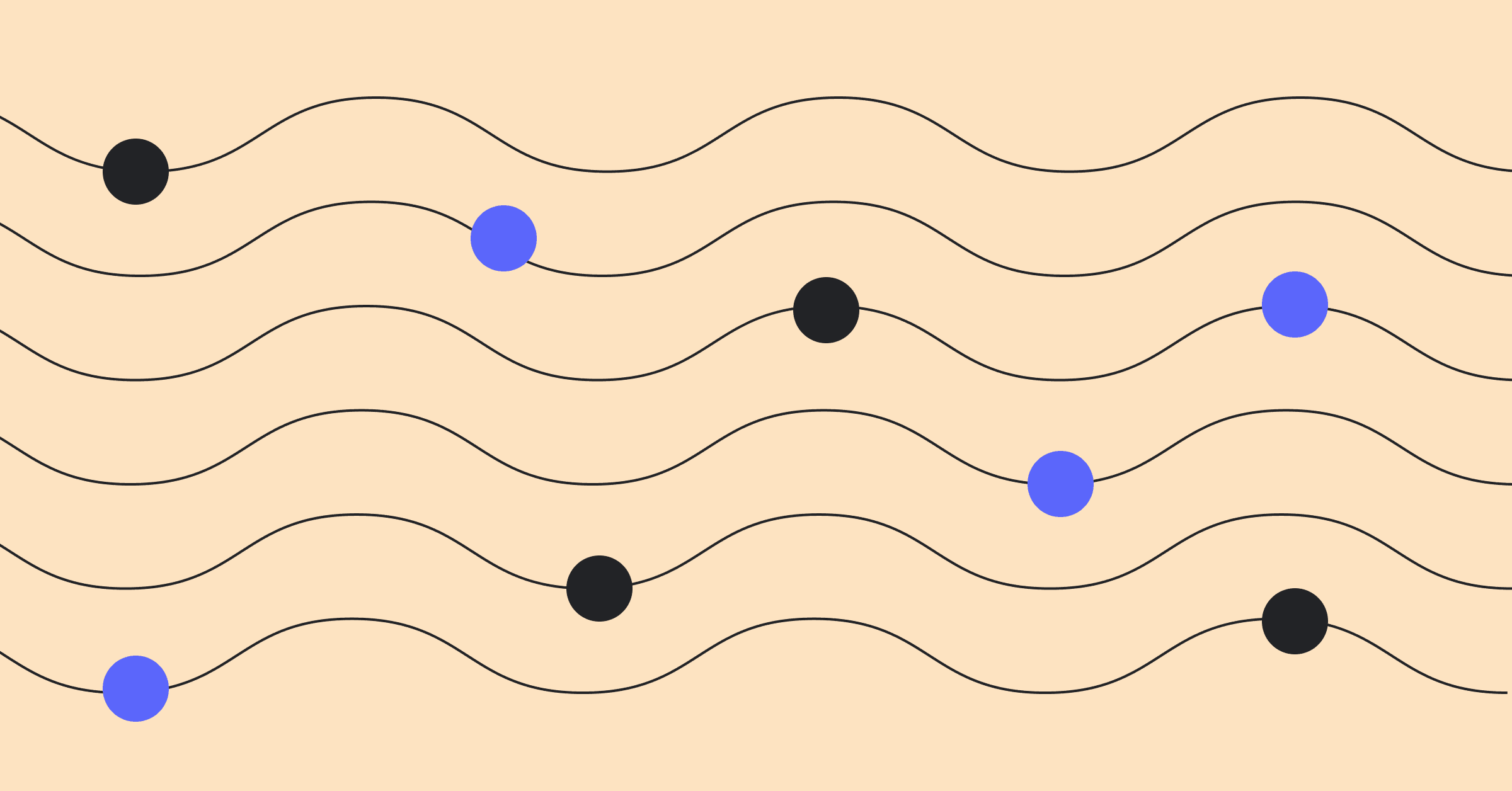Software quality metrics guide critical engineering decisions, from refactoring priorities to architecture planning. Cyclomatic complexity stands among the most widely used metrics, but relying on it exclusively leads to misguided conclusions about your codebase's true health.
Not all complexity is bad, and not all simplicity is good. Understanding your code's true health requires more than just a number.
This guide examines cyclomatic complexity and what it reveals, where it falls short, and how to enhance your quality assessment approach with complementary metrics that provide a more complete picture of code maintainability.
What is cyclomatic complexity?
Cyclomatic complexity quantifies the number of independent paths through a program's source code. Developed by Thomas McCabe in 1976, this metric derives from graph theory and creates a numerical score reflecting code structure complexity.
At its core, cyclomatic complexity counts logical forks in your code. For example, each additional if statement, switch case, or conditional loop increases the score. Higher scores indicate more complex code logic that typically requires more thorough testing and carries greater maintenance risks.
Engineering leaders care about cyclomatic complexity for several distinct reasons:
- Cyclomatic complexity correlates with testing requirements: higher complexity demands more test cases to achieve full path coverage.
- Cyclomatic complexity predicts code lifespan and refactoring: complex functions typically cost more time and effort to modify safely and are more frequently rewritten.
- Cyclomatic complexity flags potential reliability issues: code with numerous execution paths has more opportunities for bugs to hide.
Your testing team uses complexity metrics to estimate testing scope, while your code review processes might include complexity thresholds to catch difficult-to-maintain logic before it enters your codebase.
How to calculate cyclomatic complexity by example
Understanding how to calculate this metric helps you interpret its meaning more accurately in your development workflow.
The cyclomatic complexity formula
The industry standard formula for calculating cyclomatic complexity is:
CC = E - N + 2P
Where:
- N represents the number of code blocks between logical forks
- E represents the number of logical forks in the code (For example in JavaScript: each if, while, for, case statements, logical AND, and logical OR adds 1 to the complexity count)
- P represents the number of connected components (typically 1 for a single function)
For practical purposes when reviewing isolated code, you can simplify this to:
CC = Number of decision points + 1
Simple code example
Consider this JavaScript function:
function validateUserInput(input) {
if (!input) {
return false;
}
if (input.length < 3) {
return false;
}
if (input.length > 50) {
return false;
}
return true;
}
This function has 3 logical checks (the 3 if statements), giving it a cyclomatic complexity of 4 (3 + 1).
Simple code example
Consider this JavaScript function:
function processTransaction(transaction, user) {
if (!transaction || !user) {
return { success: false, error: "Missing data" };
}
if (user.accountLocked) {
return { success: false, error: "Account locked" };
}
if (transaction.amount <= 0) {
return { success: false, error: "Invalid amount" };
}
if (transaction.type === "withdrawal") {
if (user.balance < transaction.amount) {
return { success: false, error: "Insufficient funds" };
}
if (transaction.amount > user.dailyLimit) {
if (!user.overrideLimits) {
return { success: false, error: "Exceeds daily limit" };
}
}
} else if (transaction.type === "transfer") {
if (!transaction.destination) {
return { success: false, error: "Missing destination" };
}
}
return { success: true };
}This function has a cyclomatic complexity of 11 (9 if statements + 1 logical OR + 1), making it significantly more complex and harder to test comprehensively.
What cyclomatic complexity tells you about your code
Cyclomatic complexity provides valuable insights into several aspects of your codebase:
Testing requirements
The complexity score directly corresponds to the minimum number of test cases needed for complete branch coverage. A function with a complexity of 10 requires at least 10 distinct test cases to exercise all possible execution paths.
This insight helps testing teams allocate resources effectively and estimate testing effort more accurately. Functions with high complexity scores naturally demand more rigorous testing to ensure reliability.
Refactoring candidates
Functions exceeding recommended complexity thresholds (varies per organization, but commonly around 10-15 per component) signal prime candidates for refactoring. These complex functions often violate the single responsibility principle and mix multiple concerns into a single component.
Breaking down these functions improves maintainability for developers (and tools) that need to understand and modify the code later.
Cognitive load indicators
Complex functions demand more mental effort to understand fully. When developers must track numerous decision paths and state changes, their cognitive load increases significantly, raising the likelihood of introducing bugs during maintenance. This also slows down your cycle time by causing apprehension for pickup time, and prolonging the code review process.
Monitoring complexity trends across your codebase helps prevent the gradual accumulation of overly complicated code that eventually becomes resistant to change.
Quality risk assessment
Code with high cyclomatic complexity tends to hide more defects. Research shows a strong correlation between complexity and defect density, making this metric valuable for identifying modules that may require additional scrutiny during code reviews and testing.
Why cyclomatic complexity alone isn't enough
Cyclomatic complexity is a leading indicator, not a trailing one. Leading Indicators predict future outcomes by signaling potential risks or changes before problems manifest. But despite its usefulness, cyclomatic complexity tells only part of the code quality story. Focusing exclusively on this metric can lead to misleading and premature conclusions about your codebase's health.
Quality isn't just about logical forks
Code with low cyclomatic complexity can still be difficult to maintain. A function might have few decision points yet suffer from unclear variable naming, poor documentation, inconsistent abstractions, or convoluted logic that makes it challenging for other developers to understand.
Readability often matters more than raw complexity scores. A well-structured function with clear intent and good documentation might remain maintainable despite moderate complexity, while a simple function with cryptic variable names and unclear purpose creates ongoing headaches.
The software’s purpose may dictate natural complexity
Different types of code naturally require different complexity levels. State machines, parsers, permission systems, and business rule engines inherently involve numerous decision paths. Artificially constraining these components to meet arbitrary complexity limits can create more problems than it solves.
Financial calculation engines, for instance, often implement complex tax regulations or accounting rules that resist simplification. In these domains, higher complexity scores reflect the legitimate intricacy of the problem space rather than poor design.
Numeric metrics can be misleading
Two functions can share identical complexity scores yet differ dramatically in maintainability. Consider this:
- Function A uses deeply nested if-else statements with complex conditions to handle errors at every stage of the logic.
- Function B uses early returns to check for errors, producing a flat structure
In cyclomatic complexity, they would have the same score but offer vastly different levels of cognitive burden to understand.
In fact, over-optimization for low cyclomatic complexity can also lead to excessive function splitting that fragments related logic across too many small components. This fragmentation ultimately increases the cognitive load required to understand how a codebase works.
Cyclomatic complexity vs cognitive complexity
Recognizing the limitations of cyclomatic complexity has led to the development of alternative metrics that better capture code maintainability.
An example extension of this metric is cognitive complexity, which measures how difficult code is to understand rather than simply counting paths. This metric commonly evaluates factors like:
- Nesting depth
- Structural line breaks
- Logical operators
- Recursion points
Unlike cyclomatic complexity, cognitive complexity penalizes nested structures more heavily than sequential ones, aligning better with how developers actually process code mentally.
For example, 3 sequential if statements receive a lower cognitive complexity score than 3 nested if statements, despite having identical cyclomatic complexity. This distinction recognizes that nested structures demand more mental modeling from developers.
Modern static analysis tools increasingly incorporate cognitive complexity alongside traditional cyclomatic complexity to provide a more comprehensive view of code maintainability.
How to reduce cyclomatic complexity and improve code quality
When you identify functions with excessive complexity, these strategies help simplify them while improving overall code quality:
Refactor large functions
Break monolithic functions into smaller, single-purpose components that each handle one clear responsibility. Extract repeated code patterns into helper functions with descriptive names that explain their purpose.
This approach not only reduces complexity scores but improves reusability and testability. Each smaller function becomes easier to reason about independently.
Simplify conditional logic
Consolidate related conditions and eliminate redundant branches. Use early returns to handle exceptional cases first, creating a flatter control structure with less nesting.
Replace complicated boolean expressions with well-named helper functions or variables that clearly communicate their purpose:
// Before
if (user.age >= 18 && user.verified && !user.restricted && user.region === 'EU') {
// Grant access
}
// After
const isEligibleForAccess = checkUserEligibility(user);
if (isEligibleForAccess) {
// Grant access
}Apply standard and expected design patterns
Many design patterns specifically address complexity management. These established software development patterns provide proven templates for handling complexity in maintainable ways that other developers will recognize and understand.
Collaborative reviews and pair programming
Technical complexity often emerges gradually during development. Regular code reviews and pair programming sessions help spot unnecessary complexity earlier in the development cycle.
Fresh eyes frequently identify simpler approaches to problems that have grown unnecessarily complex through incremental changes.
Measure smarter, not just harder
Cyclomatic complexity is a leading indicator that provides valuable insights into your code's structure and testing requirements. However, true software quality assessment requires a broader perspective from multiple indicators, including:
- Maintainability factors beyond path complexity
- Domain-appropriate complexity expectations
- Developer experience and cognitive load
- Test coverage and defect rates
The most effective engineering teams use cyclomatic complexity as one tool in a comprehensive quality measurement strategy. They balance quantitative metrics with qualitative judgment, recognizing that different types of code have different quality needs.
As you refine your approach to code quality measurement, expand beyond simple complexity tracking to include metrics that capture the full spectrum of what makes code truly maintainable for your team: readability, testability, modularity, and clarity of intent.
These multidimensional insights provide the foundation for codebase health decisions that improve both developer productivity and software reliability over time.
FAQ: Common questions about cyclomatic complexity
What is a good cyclomatic complexity value?
Industry standards suggest different thresholds depending on function type and risk level. For most application code, maintain complexity below 10 to ensure reasonable testability. Critical systems components should aim for lower scores, between 5-7. Research indicates that functions exceeding complexity of 15 contain significantly more defects and become exponentially more difficult to maintain or refactor.
Rather than enforcing rigid limits, establish graduated thresholds that trigger different levels of review. Functions with complexity 11-15 might require peer review, while those above 15 could need senior developer approval and explicit test coverage verification, depending on pre-flagged areas of your codebase (e.g., writing PR automations for certain directories).
How do you reduce cyclomatic complexity?
The most effective approaches include extracting helper methods for logical chunks, implementing early returns to handle edge cases early, simplifying boolean expressions, and applying appropriate design patterns. Focus refactoring efforts on code that changes frequently. That’s because complexity in rarely-modified code commonly poses less risk than in actively developed areas.
Remember that reducing complexity works best as an ongoing discipline rather than a one-time cleanup effort. Include complexity assessments in your regular code review process to prevent the accumulation of overly complex functions.
What does high cyclomatic complexity mean?
High complexity indicates code that's harder to test, more likely to contain defects, and more expensive to maintain. It often signals violation of the single responsibility principle, i.e., individual functions are attempting to do too much. This complexity frequently emerges when code evolves organically without intentional refactoring.
However, context matters significantly. A parser implementation or state machine naturally requires more decision points than a simple data transformation function. Evaluate complexity relative to the domain requirements rather than applying uniform standards across all code types.
What is the formula for cyclomatic complexity?
The formal formula is CC = E - N + 2P, where N represents the number of code blocks between logical forks, E represents the number of logical forks in the code (for example in JavaScript: each if, while, for, case statements, logical AND, and logical OR adds 1 to the complexity count), and P represents the number of connected components (typically 1 for a single function)
You can often simplify this to: CC = Number of decision points + 1
Most development tools calculate this automatically, so understanding the underlying concepts as explained in this article will prove more valuable than manual calculation in day-to-day work.
What's the link between cyclomatic complexity and code quality?
Cyclomatic complexity serves as one indicator of maintainability, a key component of code quality. Lower complexity generally correlates with better testability, fewer defects, and easier maintenance. However, this relationship isn't perfect.
High-quality code balances appropriate complexity with readability, modularity, and proper abstraction. Some complex functions with excellent documentation and clear structure maintain high quality despite their complexity. Conversely, simple functions with poor naming or inappropriate abstractions can represent low-quality code despite low complexity scores.
What are common causes of high cyclomatic complexity?
Several patterns repeatedly contribute to excessive complexity:
- Feature accumulation without refactoring
- Deeply nested conditional logic, particularly cascading if-else structures
- Manual error handling without appropriate abstraction
- Business rule implementations with numerous special cases
- State management spread across different code sections
- Lack of appropriate design patterns for managing variation
Recognizing these patterns helps address the root causes of complexity rather than treating symptoms through superficial refactoring.
The complete approach to code quality measurement
While cyclomatic complexity provides valuable insights into code structure, comprehensive quality assessment requires multiple dimensions of measurement. Forward-thinking engineering organizations complement complexity metrics with:
- Cognitive complexity scores that better reflect human comprehension challenges
- Code churn tracking to identify unstable components
- Test coverage metrics focused on critical paths
- Defect density measurements correlated with complexity
- Developer feedback on maintainability
By building a multidimensional view of code quality, you gain more accurate insights into your codebase's true health and can prioritize improvement efforts more effectively.
Modern static analysis tools integrate these complementary metrics to provide nuanced quality assessments. They help identify when complexity represents a legitimate response to domain requirements versus an opportunity for beneficial refactoring.
Ready to go beyond code complexity metrics? Discover how comprehensive engineering metrics can help your team track real-world maintainability and delivery health, balancing technical quality with business impact measurements.




